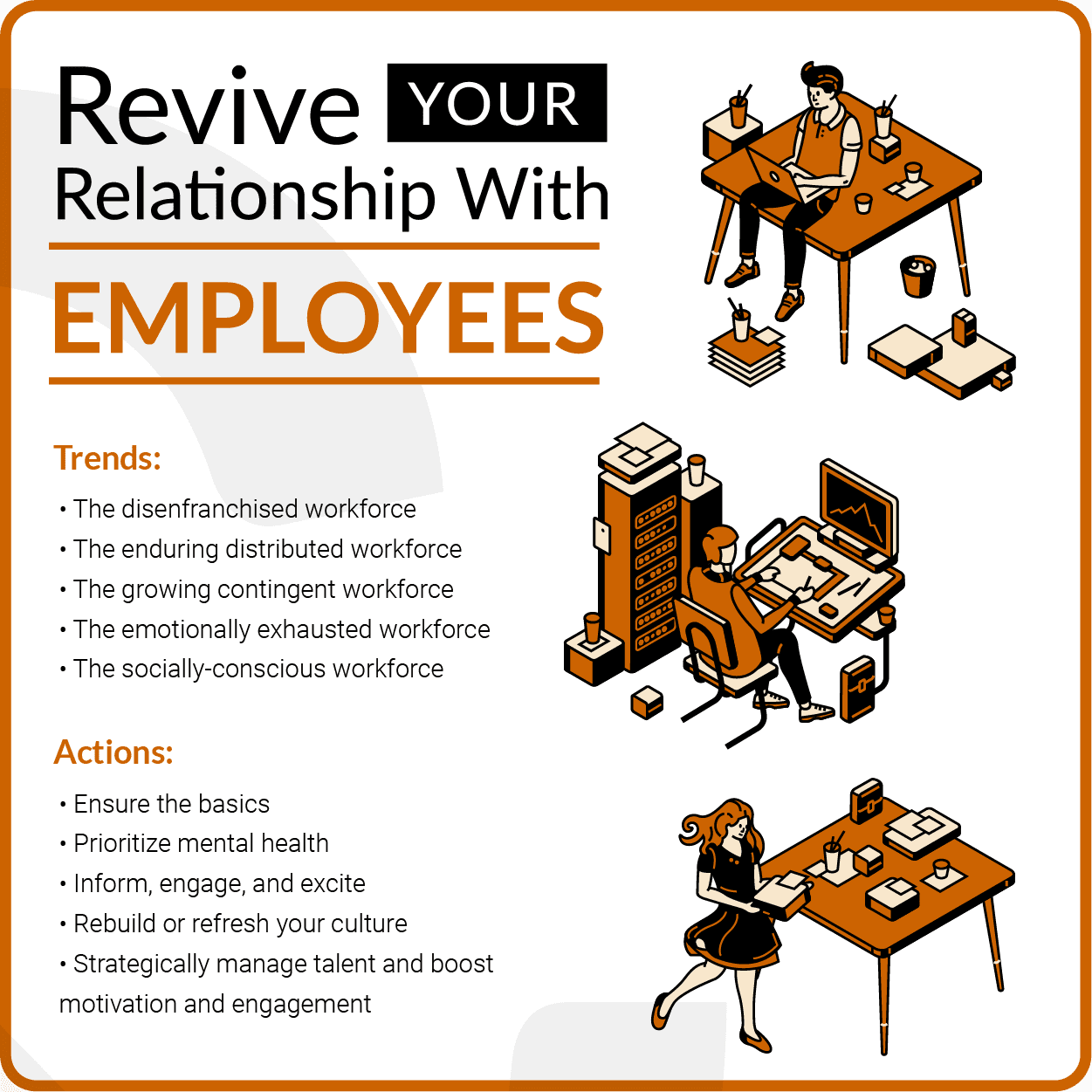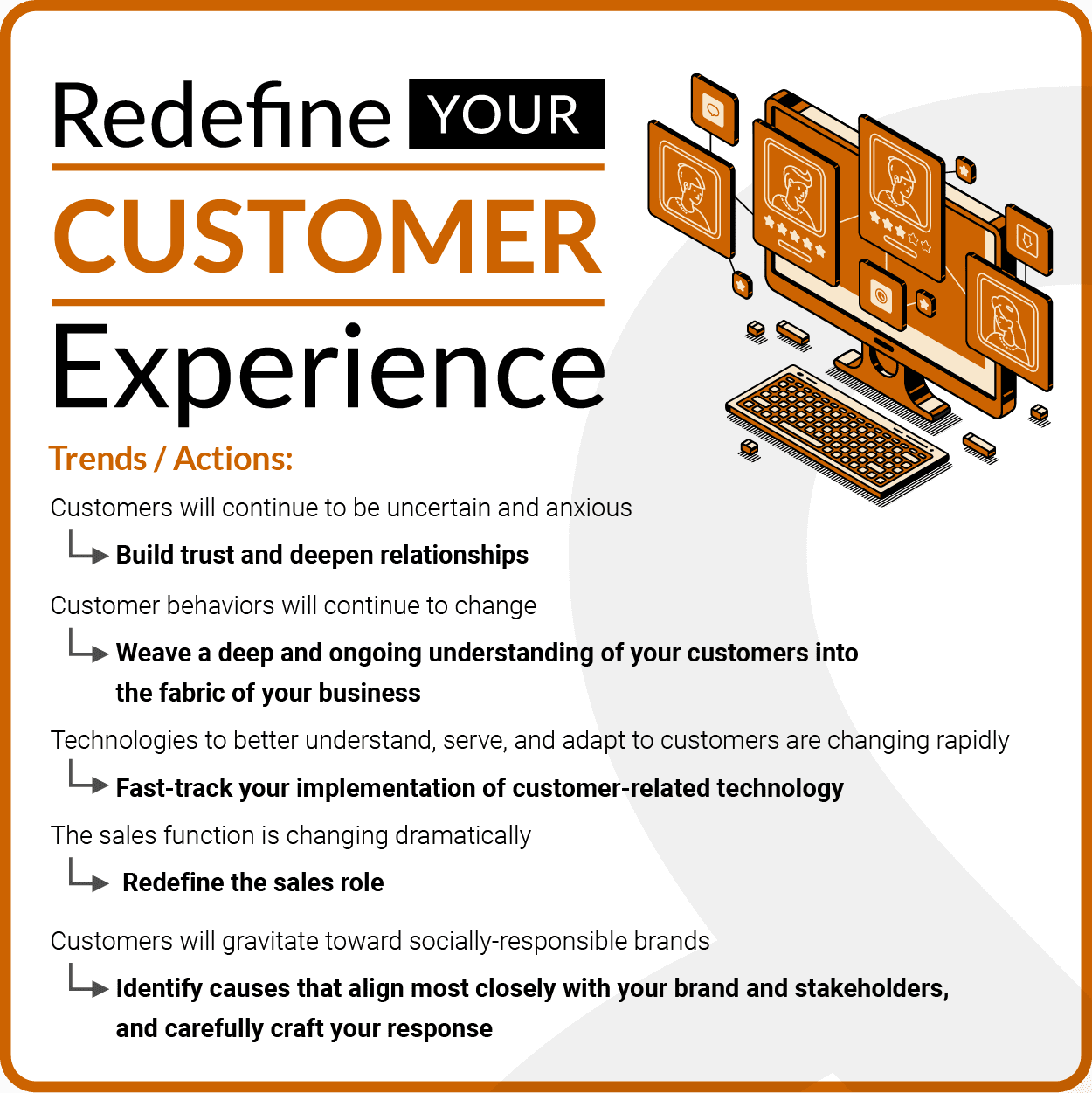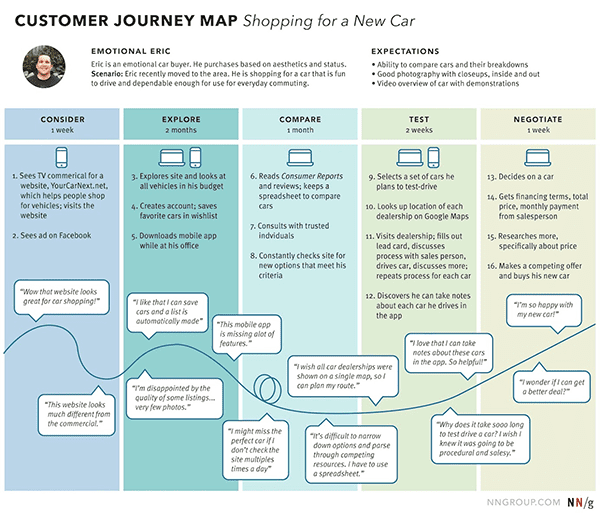
Webinar Recap: How Mid-Market Companies Can Emerge Stronger Post-Pandemic
Webinar Recap: How Mid-Market Companies Can Emerge Stronger Post-Pandemic

Written By
Is your business ready for the “new normal” post-pandemic?
Most mid-market companies have taken the right immediate actions in response to the coronavirus outbreak: They’ve followed health and safety guidelines in their workplaces, cut costs, and taken out loans and grants. However, the changes in customer and employee behaviors and attitudes are so deep that companies must reexamine how they do business, and ensure it fits the emerging “new normal.”
For most mid-market companies, things will never go back to what they were, and strategies that worked in the past may no longer apply. Smart leaders will seize these changes as opportunities to become stronger and more competitive.
Our last webinar focused on identifying and examining the new business trends that have emerged as a result of COVID-19, and how to leverage these changes as opportunities to adapt your business and sustain long-term growth. Amanda Cook hosted our panelists, who shared their valuable insights based on decades of experience in the trenches dealing with these issues:
- Rajat Kapur, &Marketing’s Managing Director
-
Bob Olsen, who brings decades of marketing leadership and change management experience from DuPont, FXI, and Deloitte Consulting
-
Rahul Kapur of Icon Investment Partners, who brings 35+ years of business transformation experience
During the webinar, we learn:
- The key business discontinuities and changes that have emerged from COVID-19 and the opportunities they present
-
The key areas that require immediate attention from mid-market companies, and the actions they must take to sustain long-term growth:
- Redefine the customer experience
- Revive relationships with employees
- Restructure your supply chain
- Rethink and reset your strategy
Couldn’t make it live? Watch the webinar recording to hear the valuable insight on these business leaders shared on the emerging trends we are seeing today.
Are you ready to rethink and reset your business strategy to emerge stronger post-pandemic? We can work with you to create your own radar chart that is specific to your company’s goals, and develop the right approach to customize actionable steps for your business. Contact us to get started!
About the Authors
Rajat “Raj” Kapur is the founder and Managing Director of &Marketing. He strives to provide growing businesses of all sizes unparalleled marketing strategy and execution services. Raj brings two decades of professional experience in marketing, sales, and strategy development experience spanning B2B and B2C Fortune 50, mid-sized, and startups.
Robert Olsen is a Marketing Expert, Speaker and Consultant with a unique combination of Management Consulting and C-suite experience in chemicals and life sciences. He is an experienced Chief Marketing Officer, and has also served as Corporate Marketing Director at DuPont and a Strategy and Operations Consultant at Deloitte. Robert helps companies grow, utilizing his expertise in marketing, sales, and innovation to navigate major changes and new programs including M&A, brand building, and culture transformations. Robert is passionate about creating a better customer experience and employee culture to drive business results.
Rahul Kapur has 40+ years of successful business experience spanning a variety of areas. As a business consultant, he provides companies of all sizes with his expertise in strategy development, M&A, new products & innovation, and data analysis and modeling. His experience includes Unilever, Dow Chemical and Aearo Technologies (now 3M). He is Managing Director of Icon Investment Partners, Chairman of Guilford Group, Managing Member of Ark Capital Investments, LLC, and Senior Advisor for &Marketing, Crossroad Transactions, and Quest Safety Products, as well as on the boards of several start-ups.
About &Marketing
&Marketing provides the robust outsourced marketing department growing companies need without the high overhead costs of big agencies or full-time employees. Our variable model empowers businesses to reach their growth goals through access to the guidance and expertise of senior level strategists and a flexible execution team.





















Recent Comments